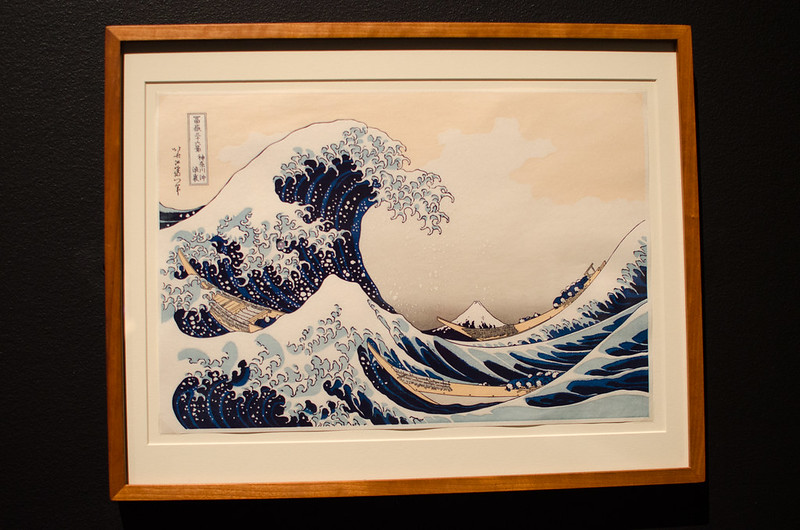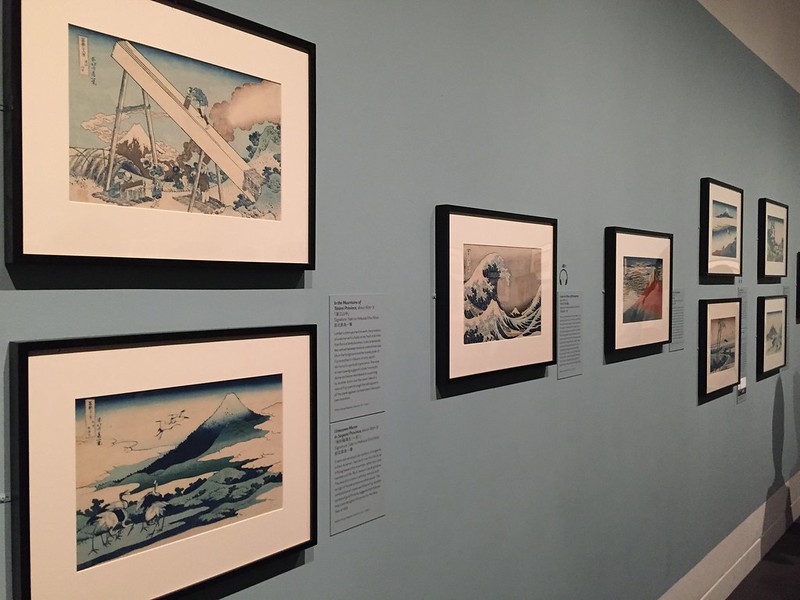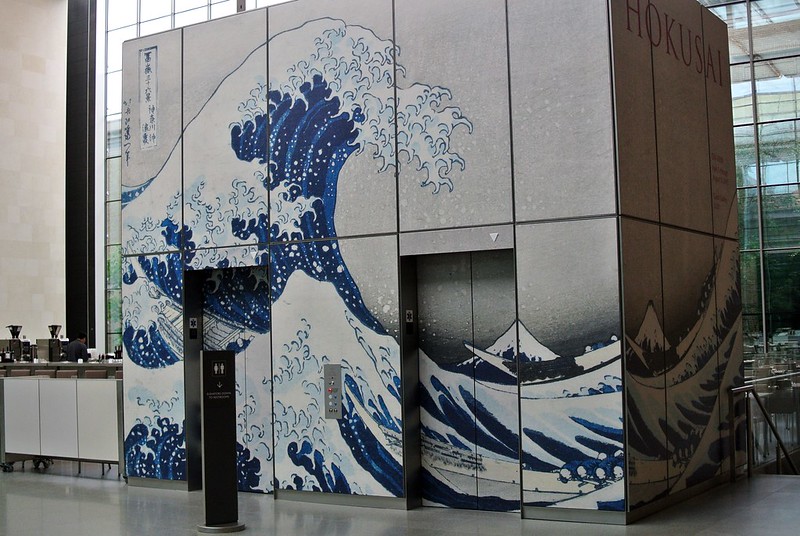Hokusai’s The Great Wave off Kanagawa is one of the world’s most celebrated works of art. A prime example of the ukiyo-e practice, this Japanese print has inspired artists and viewers for nearly 200 years. While The Great Wave is instantly recognizable, many may not know of its history, including its surprising evolution, role within a series, and even its lasting legacy.
What is The Great Wave off Kanagawa?
The Great Wave off Kanagawa is a yoko-e (landscape-oriented) woodblock print created by Japanese artist Katsushika Hokusai during the Edo period. It is the first piece in Thirty-six Views of Mount Fuji, a series of ukiyo-e prints showing Japan’s tallest peak from different perspectives.
In this piece, Mount Fuji is seen from the sea and framed by a large, cresting wave. This swell dominates the canvas, dwarfing both the mountain and a trio of boats and inspiring the title of The Great Wave.

“The Great Wave off Kanagawa,” ca. 1826-1833 (Photo: Wikimedia Commons Public Domain)
Hokusai’s Precursors
While this print is Hokusai’s most famous depiction of a wave, it is not the only time he experimented with the motif. In fact, he created three other similarly themed works of art throughout this lifetime, allowing viewers to visually trace the evolution of The Great Wave.
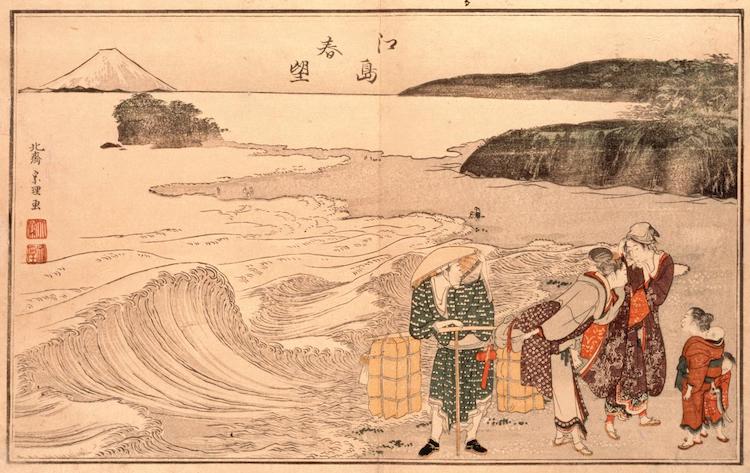
“Springtime in Enoshima,” 1797 (Photo: Wikimedia Commons Public Domain)
Hokusai started employing waves as subject matter when he was 33 years old. In 1797, he created Springtime in Enoshima, a woodblock print from his The Threads of the Willow series.
While Mount Fuji and a stylized wave dominate the lefthand side of the composition, the scene also prominently features a family standing on the beach. The presence of these figures is unique to Hokusai’s wave studies, as they typically focus on the sea and its surrounding landscape—not on people.
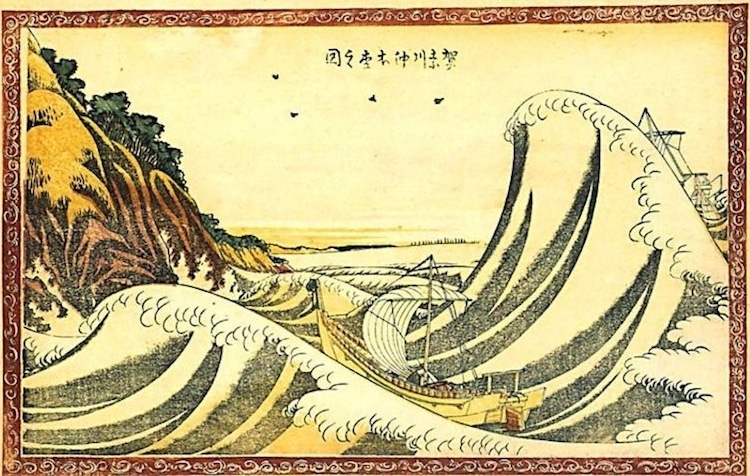
“View of Honmoku off Kanagawa,” 1803 (Photo: Wikimedia Commons Public Domain)
In 1803, Hokusai again experimented with the cresting wave motif. In View of Honmoku off Kanagawa, a large wave towers over a ship as it sails past its trough. Like the wave featured in Springtime in Enoshima, this subject is stylized. Unlike its predecessor, however, this second wave is much more simplified, larger in scale, and traveling from right to left.
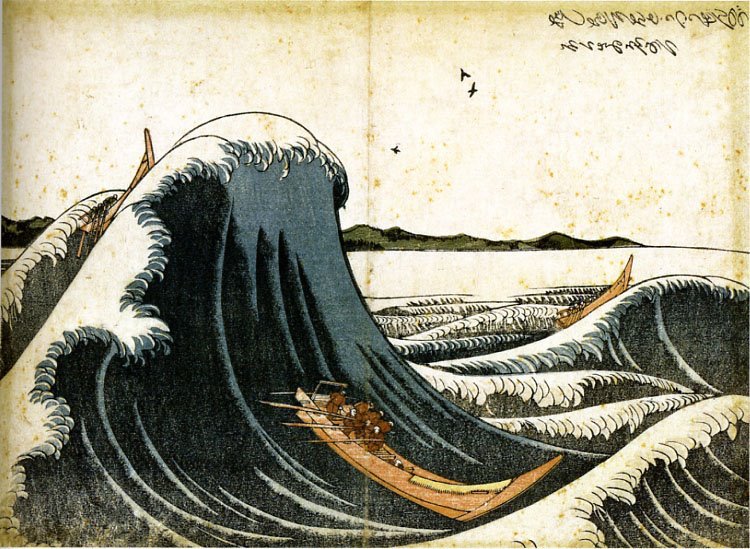
“Fast Cargo Boat Battling The Waves,” 1805 (Photo: Wikimedia Commons Public Domain)
Two years after he created View of Honmoku off Kanagawa, Hokusai completed Fast Cargo Boat Battling The Waves. Stylistically, this piece is very similar to the preceding piece. What sets is apart, however, is the composition, as Hokusai returned the cresting wave to the left side of the scene.
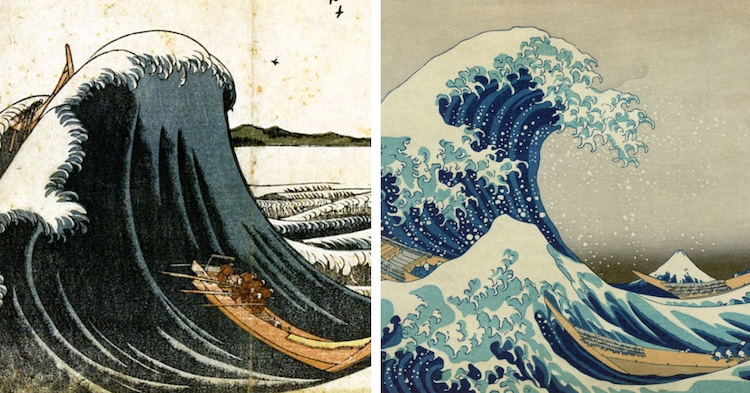
Unsurprisingly, this penultimate portrayal most closely resembles the famous and final Great Wave, though the former lacks the intricate white caps and vivid color present in the latter. On top of these stylistic differences, The Great Wave also features an important change in subject matter: the addition of Mount Fuji, its intended focal point.
Thirty-six Views of Mount Fuji
Around 1830, 70-year-old Hokusai produced Thirty-six Views of Mount Fuji. In this series, he offers glimpses of Mount Fuji from different vantage points and during various times of the year. The prints in this series are renowned for their rich hues—particularly, their blue tones—which Hokusai achieved through a complex, multi-block printmaking process.
“The sophisticated use of various hues of blue is a distinctive feature of several prints from the Thirty-six Views of Mount Fuji series, to which The Great Wave belongs,” The Metropolitan Museum of Art explains. “At the time this print was produced, there was a demand for Berlin blue—popularly known as ‘Prussian blue‘—imported from Europe. Scientific analysis has since revealed that both Prussian blue and traditional indigo were used in ‘the Great Wave’ to create subtle gradations in the coloring of this dramatic composition.”
This vivid blue is used in other pieces from the series, including the well-known South Wind, Clear Sky.
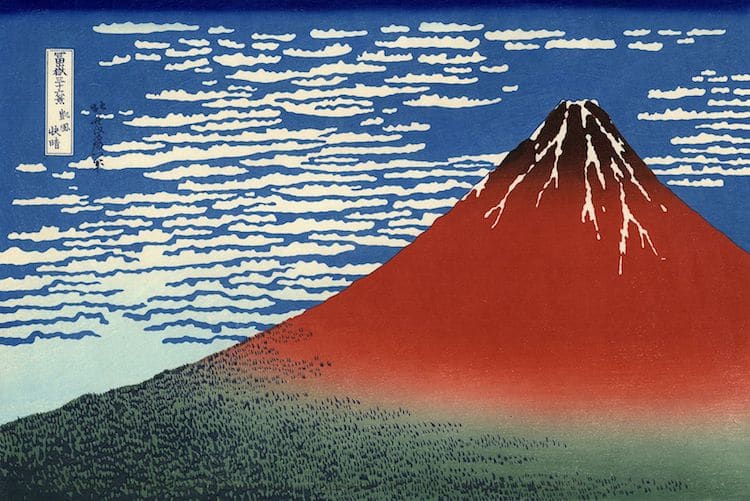
“South Wind, Clear Sky,” ca. 1830 (Photo: Wikimedia Commons Public Domain)
Created at the height of his career, Thirty-six Views of Mount Fuji is considered one of Hokusai’s most important endeavors—even according to the artist himself. “All I have produced before the age of seventy is not worth taking into account,” he famously said.
Legacy
Today, original prints of The Great Wave off Kanagawa exist in some of the world’s top museums, including the Metropolitan Museum of Art, the Art Institute of Chicago, the Los Angeles County Museum of Art, and the British Museum. “Many hundreds of impressions of the print have survived,” The British Museum notes, “attesting to its original popularity.”
Additionally, Hokusai’s Great Wave has inspired myriad works of contemporary art, including a monumental mural in Moscow, an environmental installation in Florida, and even the cat drawings of a Malaysian artist in Paris. Each of these pieces prove the enduring influence of the Japanese masterpiece.
Related Articles:
How to Make Your Own Woodblock Print Like the Japanese Masters
You Can Now Download a Collection of Ancient Japanese Wave Illustrations for Free
Classic Art Recreated Using Plastic from the Ocean & Lighters

